Sananda-Wasi and the Hammock of Reflections
Chapter 13: This chapter takes me back to when I was just beginning to hold the medicine, learning lessons I would only come to understand years later. A story of reflection and humility.
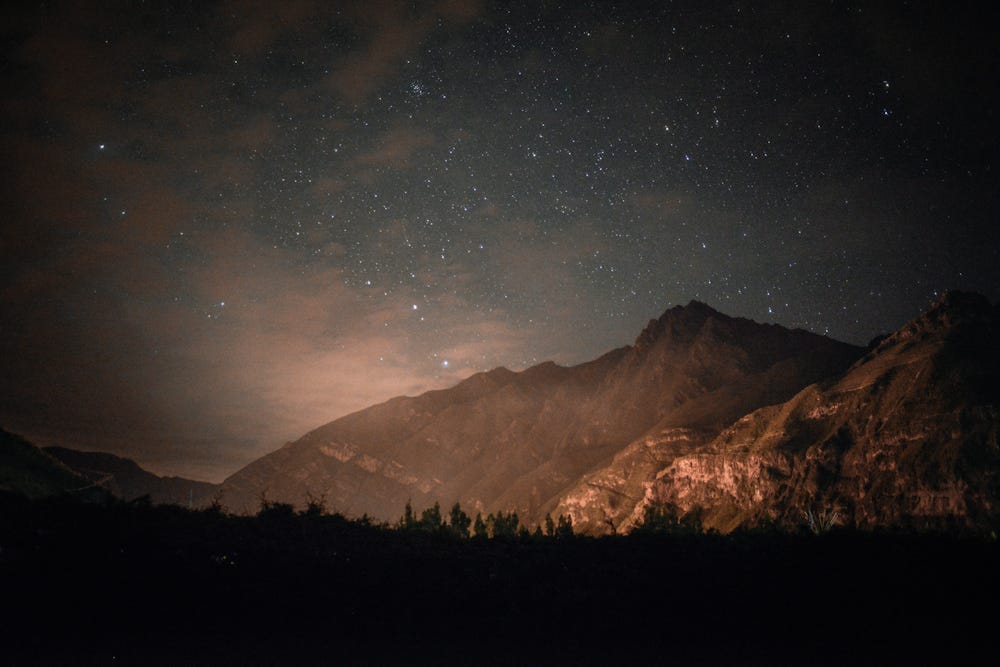
On the third day, we decided to hold a daytime ceremony in the jungle. In the early morning, we walked into the jungle and set up our hammocks and mosquito nets. Qwatsi was with us, as always. We walked through the dense jungle for around ten minutes. When we reached a suitable spot, we cleared a small area with our machetes. Qwatsi worked so hard in those moments; it was amazing to feel his energy and enthusiasm. We bound the hammocks to the trees and drank some medicine. Hanging there in the middle of the jungle, we had some good conversations. It was a beautiful day. The sun was shining, the birds were singing, and our spirits were singing after the beautiful opening of our temple.
Qwatsi was right next to me in his hammock. Our connection had become so deep, so strong, so full of love and trust in those early days of the dieta. Every morning, we would give each other long hugs, and whenever there was something to do, he was right in the middle of the action, seeing where he could be most helpful. He was a very intelligent boy and quickly understood situations and people. He was always watching. He had joined us in most of our ceremonies, although he never drank.
In my time in the village, I learned that Sete Estrelas had not had any Ayahuasca for many years. With the coming of the missionaries, they had lost their connection to their traditions. The missionaries had forbidden them to use their medicines, speak their language, tell their creation stories, and even use their Indigenous names. Over time, much of their culture was lost. It was surprising to me to learn that, as I had expected, a tribe with such a long history of working with Ayahuasca would have a strong connection and practice with the medicine.
And while I enjoyed leading the ceremonies, there was also a part of me that felt a sense of sadness. I had come to this dieta with a deep yearning to learn. I had hoped to sit in ceremonies where Luis would be leading, singing his prayers, and opening pathways that I had not yet walked myself. I imagined being able to watch him, learn from him, and receive his presence in the force. There was a longing in me to receive teachings from someone I respected deeply—someone further along the path. I had felt such resonance with Luis, and while I treasured the conversations and lessons we shared, I had also hoped that some of that learning would come through shared ceremony.
Realising that Luis no longer drank Ayahuasca or led ceremonies was a big moment for me. It stirred something in me that was difficult to put into words at first. I had come with the hope of learning through witnessing, sitting with someone I deeply respected as he worked within the force of the medicine. But he wasn’t practising what he was teaching. He spoke about the plants, about their power and their spirit, but he wasn’t drinking them anymore. That realisation carried a quiet sadness. I had imagined something different. For a time, I even tried to make peace with it by imagining that perhaps this could be my future too, that one day I would also stop drinking the medicine, that the need would fall away. But slowly, during this dieta, that projection dissolved. I came to see that working with the plants is a sacred relationship. It is not something to transcend or walk away from as a sign of growth. It is something to tend with balance and care. If a time ever comes when I no longer need to drink, it will arrive on its own. Not as a goal, and not as an escape. For now, I know I am still meant to walk with them. Still, something in me wished I could have seen him there, singing, guiding, working in the force. That feeling lingered quietly in the background, a small ache in the heart.
Another discovery that surprised me just as deeply was the absence of Ayahuasca vines and chacruna plants in the forest surrounding the village. I had expected to find them growing naturally in the jungle, almost everywhere. That had been my assumption—that in a region so rich in plant life, these sacred plants would be abundant, especially near a tribal village with such a deep ancestral connection to them. But the truth was different. There were almost no vines to be found. No chacruna. Not near the village, nor in the surrounding forest. I was stunned by that. Slowly, I came to understand why. With the reawakening of interest in plant medicine, more and more people have come to these territories in recent years, seeking, drinking, and dieting. But the plants had not been replanted with the same care and reverence. They had been harvested again and again, without renewal. Over time, the source had dried up. The forest had been emptied of its medicine. It took me a moment to grasp the magnitude of what that meant. Over time, I came to see that this absence was a message in itself. Something had been lost. Not just the plants, but the connection. The living presence of the medicine in the forest had faded, just as it had faded from the culture.
My bringing of the Santo Daime to the village turned out to be something very special. For the people of Sete Estrelas, it was almost like a rebirth of their sacred traditions. There had not been ceremonies in the village for a long time. With the arrival of the missionaries, not only had the use of Ayahuasca been discouraged; it had been systematically erased. Little by little, the ceremonies stopped. The songs were forgotten. The old prayers were no longer spoken. For decades, that part of their culture had lain dormant, still present in memory, but not in practice. So when we arrived and held our dieta, when the force of the Daime began to move through the village again, it reawakened something. It touched a root that had not been watered in a long time. I could feel that. I could see it in the eyes of the elders, in the curiosity of the children, in the quiet reverence that returned to the land. It felt like something ancient had been stirred back to life.
The return of the medicine brought with it many questions. Important questions. Edi and Muca would often come to me for advice on how to work with the medicine, how to hold space, how to navigate what was coming alive again in their village. One of the topics they brought up was the presence of children in the ceremonies. Could the children come? Should they be allowed to drink medicine? Should there be rules or structure? It felt like a real crossroads. After reflecting on it, I proposed that we hold a meeting with all the mothers of the village. This was not a decision to be made by a few men sitting around the fire. This was something that needed to come from the mothers, from the ones who would carry this path forward through their children. I felt it had to be a collective decision, made with care and in alignment with what the people truly felt.
A few days after the opening of our new temple, all the mothers gathered around in the early morning. I really enjoyed being on the force of the medicine and being in conversation with people. It opened up a space inside of me that I hadn’t really experienced much before.
We opened the conversation, and I explained what I had seen in a beautiful Santo Daime community in Mauá, a few hours northwest of Rio de Janeiro, called Céu do Montanha. I had visited it the year before with Padrinho Alfredo. In the Mauá community, the Santo Daime takes a central place. They have a splendid temple there, and when I visited, a big, strong Ayahuasca vine was growing in the middle of it, its branches, leaves, and flowers reaching up to cover the entire roof. The vine had been planted at the same time the temple was constructed, symbolising the unity between the physical structure and the living medicine. Since then, I heard that the vine had been cut, but at the time I visited, its presence left a deep impression on me.
Twice a month, and also on special days of the year, the community holds ceremonies open to everyone—locals and people from abroad. Right next to the temple, there is a house just for the children. Mestre Irineu, the founder of the Santo Daime in the early twentieth century, stated that a mother entering a ceremony with the Daime should be able to receive the Daime without worrying about her children. If she were going to worry about her children, it would be better for her to not join the ceremony, as her worries would make it difficult for her to fully receive the medicine.
The community, therefore, built a children’s house right next to the temple. During every ceremony, all the children of the community would be in that house. Most mothers would participate in the ceremony, while others would take care of the children, ensuring that the others could attend without worrying about their offspring.
The children were allowed to play, run around, dance, and sing while the work was happening in the temple. If the children chose to go into the temple, they were welcome there. It was truly beautiful to be part of the ceremonies, watching the children play in their house, and seeing some of them enter the ceremony with such joy and light.
If the children came up to the place where the medicine was served and asked for some medicine, they would receive a very tiny amount of it. This would happen only if the children came to that place themselves and asked for the medicine. Never would a child be asked if they would like some medicine. The community had explained to me that the children intuitively knew what they wanted or needed, and the adults were there to listen to the children and to guide them if they chose to drink the medicine.
The children I had seen in that community were among the most beautiful I had ever met in my life. They radiated so much joy, so much truth, so much purity. Their eyes were open and alert. Until that point, I had read quite a bit about the Rainbow Children, also known as the New Earth children. There, in that community in Mauá, I had seen them for the first time; true children of the light. I look forward to seeing those children in a few decades and hearing their stories, as well as witnessing what they will bring to the world.
We discussed all of this, sitting in a circle with the mothers of the village. It felt very special to be in that space, to be in such an open and thoughtful conversation while still under the gentle force of the medicine. There was a clarity in the air, a softness, a deep listening. I could feel the presence of Ayahuasca with us, not just as a memory or an idea, but as a living presence in that moment. Ayahuasca is seen as the grandmother of all the plants, all trees, and all flowers—a plant that teaches, a teacher plant, with a spirit that is seen as feminine by most people. She carries so much wisdom, so much experience, so many teachings. She teaches with patience, compassion, and depth, like a true grandmother. And to feel that spirit moving quietly among us as the mothers spoke, each in her own way, made the moment even more meaningful. It felt like something important was being remembered.
After our conversation, all the mothers agreed: the children would be welcome to join the ceremonies, but only when the children asked to be part of it. If they wanted to be part of the ceremony, they had to show up at the temple with their hammocks and should prepare themselves that day by not eating anything sweet. Every mother communicated that with her children in her own way.
Qwatsi had been at my side for the whole conversation. Afterwards, Louisa and Luis came close to me and told Qwatsi that he should let me know if he wanted to drink medicine, and that he should listen to me about what that would be like. Qwatsi and I looked at each other and leaned in for a big hug. It felt so special what was unfolding between us.
After the conversation with the mothers, we all hung our hammocks in an open spot in the jungle, away from the temple. I drank another cup of medicine. When I had the bottle in my hand, Qwatsi came up and asked for a cup. It would be his first cup of medicine. I looked him in the eyes and poured him a small amount. He went to his hammock and stayed right next to me for the whole ceremony. Now and then I would get up from my hammock, stand next to his, and ask him: “Qwatsi, tudo bom?” All good? Most of the time, he would look up and respond: “Tudo.” After that, we would hug.
Lying there in my hammock, the force of the medicine coursing through my body, I looked back on things that had happened in the years before. It was as if I could contemplate those situations from a distance, without any judgment or reaction. One night, lying on my mattress in my hut, I reflected on Sananda-Wasi, the healing centre I had founded in the Sacred Valley of Peru. I had opened the centre after just two years of experience with Ayahuasca and only a few ceremonies facilitating. In hindsight, starting a centre like that so early in my journey may have been a bit bold and premature. However, at the same time, I had always seen it as my university of healing, a place where I could learn through hands-on experience, guided by sincerity and prayer. The vision had been strong, and it had come with a certain clarity and timing. It was birthed into reality through a string of synchronicities and moments of grace. The beginning had felt special, touched by something larger. The very first woman who walked through our doors was Bonnie. She entered with four tumors in her right breast and left without them. But over time, things began to shift. I started to realise that there were areas of the work that I didn’t yet fully understand. I could feel that I needed more training, more education, more time with the medicine myself. And now, deep in my dieta, I found myself wondering if the center would still exist by the time I returned.
One question that several people over the years had asked me was: “What is your centre’s success rate? How successful are your programs?” I began to explore those questions, and in the process, I reflected on how the Western world perceives healing in these times. I could see that “success rate,” as defined by the West, relates to survival rather than inner health, peace, and fulfilment. Reflecting on what a “success rate” means, I could see that it was generalising to think in that way. It took away the preciousness of looking at every single person in depth, really understanding each individual’s process as their own journey.
Lying there in my hammock, I remembered two women who had come to the centre in Peru and had stayed there for three months. Both had breast cancer. In my view, deep healing had happened with both of them, but their processes could not have been more different.
One of the women, Bonnie, was thirty-five years old. She was diagnosed with stage four cancer, with five tumours in her right breast. She joined a three-month program that involved working with food, natural medicines, Ayahuasca, and various other healing modalities. With full commitment, Bonnie dove into the journey. We worked on many levels of her disease: emotional, physical, mental, and spiritual.
When Bonnie had been with us for several weeks, we adopted two small kittens for the centre from a local Peruvian family who weren’t able to take care of the litter. They were only a few months old and were barely more than skin and bones. They were tiny and fragile. They wouldn’t have survived much longer if we hadn’t taken them in. When they arrived at the centre, they hid behind a pile of firewood and hardly came out from behind it. We all worked together to try to feed them and make them drink, tempting them with milk, water, fish, and various types of food, but they would simply ignore it. They hid behind the firewood for days, and we all worried that they wouldn’t make it.
A few days later, Bonnie was in the living room, next to the fire, eating a plate of food. One of the cats, a shiny black kitten that we had named Cleopatra, emerged from behind the stack of wood and crept over to Bonnie, climbing into her lap. I watched from a distance as Bonnie offered the kitten some of her food with so much gentleness and love. She touched the tiny, fragile, black cat with a light, tender touch, not wanting to scare her away. The cat ate a little bit and drank something from Bonnie’s cup. I stayed at a distance, just watching. I felt touched by the scene I was witnessing. Bonnie was taking care of the cat with so much love and gentleness. After spending several weeks in the centre, this seemed like a very welcome distraction for both.
That night, I led Bonnie and two other people in a ceremony. It must have been the tenth ceremony in Bonnie’s program.
In that ceremony, deep on the force of the medicine, Bonnie returned to the moment with the kitten. She returned to the state of mind she had felt in that moment: the cat on her lap, feeding and nurturing it, providing all the love she could find within herself. While she was re-experiencing this, her vision changed rapidly, and the kitten transformed into a big, scary monster. The monster stood, huge in front of her, and came very close.
The vision shook her up, and Bonnie felt afraid. Then she remembered an instruction I had given her earlier: “When you see something scary in your visions, don’t try to make it go away, and don’t try to ignore it. Rather, face it and ask it what it wants to show you. Maybe that energy has an important message for you that it wants to communicate.”
And that is what she did. She asked the vision what it wanted to teach her, and in the moment she asked, the vision changed again. The new vision showed her higher self, holding her own body, caressing it, loving it, taking care of it, just like she had been doing with that kitten earlier that day. In that moment, she saw her own body and the relationship she had with her body. Her body was trying to tell her that the care and the love she had given so beautifully to the kitten were the same kind of love and care that her body had wanted to receive from her. She started to see that she had never allowed herself to give her body the full love and care that it had asked for. That was a big insight for her at that moment.
The vision also showed her that the breasts are part of the human body that are deeply connected to nourishment and femininity. This realisation rushed in through thoughts about her relationship with her mother, how she was raised, and even her mother’s relationship with her mother, and how her mother was raised. She went deep into the roots of her disease. She saw that the lack of nurturing and loving herself, and the lack of love and nourishment that came from previous generations, had manifested itself as disease in her breast.
As Bonnie peeled back those layers, healing began. I guided the ceremony with full presence, holding the force through music, singing, and playing my guitar as the visions moved through each of us. I remember seeing her from across the room, feeling the current shift around her. The medicine was working deeply in her. At the same time, I was navigating my visions, but I could still sense something powerful was unfolding in her space. Between the songs, I prayed silently for her healing. The atmosphere was thick with presence, the kind that needs no words. I knew something sacred was taking place.
After that deep ceremony, we continued the program, and a few weeks later, we went to the hospital for a test. We had all felt a shift in Bonnie, and although we hoped that shift had also manifested itself in her physical body, we had no clue what would come out. Together we drove to Cuzco, and when we arrived, Bonnie got a scan. The test showed that all the tumours were gone. Bonnie had healed herself of cancer.
Above is a short video from Bonnie’s journey at the centre. Watching it now, I feel the tenderness of that time and how deeply it shaped the way I walk with the medicine.
Those first ceremonies at Sananda-Wasi were beautiful, and I will always hold them close to my heart. They were full of magic, healing, and transformation. But I see now that early success in this path does not necessarily mean that you are the one creating it. The medicine itself is the force that moves, heals, and transforms. When you are just beginning to hold space, the plants can still work their miracles regardless of how much or how little you understand. It is easy to believe that the beauty you witness is coming from what you are doing as a facilitator. I see this often now in the medicine world, and I recognize that I also fell into that belief for a time. The ceremonies were powerful, but the real power came from the medicine, from the spirits, and from the willingness of the people who showed up to do their work. As space holders, we are simply learning how to step aside, to get out of the way of that magic. In those early days, I did not yet fully understand that.
Looking back, we could see that something had changed the moment the root of her disease was touched. That ceremony, when she saw her own body through the lens of nurturing and love, when she met the deeper layers of her illness, felt like a turning point. Once that root had been seen and something shifted in her relationship to herself, everything else we had been doing—the food, the juices, the natural medicines, the therapies, the prayers—became the building blocks her body could use to make the physical transition. That was our observation at the time, but of course, we could never truly know. What happened was a mystery, a grace. It was a magical time for sure, and a remarkable start to my path as a carrier of the medicine.
I lay in my hammock with tears in my eyes, feeling the weight and beauty of how it had all begun. At the same time, a quiet realisation settled in me. That early success, which many would have seen as extraordinary, also carried a shadow I did not fully see back then. It raised expectations, not only in the eyes of others, but within myself as well. In truth, I was still so young on the path. I had only sat with the medicine for two years, and suddenly I was guiding people through some of the most delicate and life-altering experiences of their lives. Looking back now, I see how premature that was.
In those early years, I believed that following the vision and answering the call was enough. And while it did open doors and bring moments of grace, there were also times at the centre when I could feel how unprepared we were for the depth and intensity of what unfolded. I have seen this pattern more and more in the medicine world—people stepping into holding ceremonies too soon, without the grounding and years of preparation needed to fully hold the responsibility. I see now that I was one of them. I don’t say this to diminish the healing that happened or the love I poured into the work, but to acknowledge that this path asks for a depth of study and presence that cannot be rushed. If there is one message I would offer to anyone who feels called to this work, it is this: take your time. Walk with the plants, learn from the elders, deepen your own healing, and allow the years of experience to shape you before holding others.
This reflection doesn’t take away from the beauty of Bonnie’s journey or the grace of what happened. If anything, it honours it even more. It reminds me how sacred and powerful this work is, and how much respect and preparation it deserves. Even now, I am only beginning to understand the depth, presence, and inner maturity it takes to carry these spaces with care—and I know this understanding will continue to grow in the years to come, far beyond what I could have seen a decade ago in that hammock.
Lying in the hammock in the jungle, I could see all of this more clearly. I returned to those moments at the centre, but with a wider view—less entangled, more spacious. That perspective gave me clarity on what had unfolded. It softened some of my judgments and helped me feel a deeper sense of gratitude. Gratitude for the magic that had been there, and also for the honesty of what I still needed to grow into. It offered me grace for the path I had walked and for the younger version of myself who had said yes to something much bigger than he could yet understand.
When another woman, Mary Lou, knocked on my door, she was in her early sixties and in the middle of her fourth round of breast cancer. The cancer was in stage four, and tumours in her breasts had recently spread to her lungs. We sat in front of the centre, in the beautiful garden, hummingbirds flying around, and she spoke frankly: “Look, this is my fourth time having cancer, and it will be the last time. I am going to survive and heal, or I am going to die. But I am not going through another round of this.” She said these words with such determination that my body trembled a little upon hearing them; they felt so true and clear.
A few days later, she moved into the centre. She had decided to take time off from her teaching job and stay in Peru for three months to follow the program. We spent those months working closely together, focusing on the many layers of healing.
A couple of weeks after Mary Lou moved in, her husband also came to Peru. He stayed in a hotel nearby and would come to visit as much as we allowed. We had to find a balance that allowed us to work with her uninterrupted, while also including him in the process so they could heal and grow as a couple. When he came in for the first time, they sat next to each other on the sofa with quite some distance between them. There was hardly any physical contact. They both looked tense and uncomfortable. When I asked about their relationship, not many words were spoken. When I inquired about their intimacy, silence was the answer.
I left that conversation feeling that the distance between them could be something to address in the healing process. One day I stopped by Mary Lou’s room, had a chat with her, and left a book on her bedside table. It was titled "The Art of Sexual Magic," by Margot Anand, a renowned teacher in the fields of relationships, sexuality and Tantra. A few days later, I stopped by her room again, and she was deeply immersed in the book. When I walked in, she hid it under her blanket, like a teenager caught in the act. We both laughed.
A few days later, I brought up the topic of sex. She told me about the distance that had developed between her and her husband, as well as the lack of intimacy in their marriage. That conversation opened a whole new chapter in the program. That day I gave her a simple homework assignment. I suggested that she go to her husband’s room, lie next to him, and that they should silently hold each other for ten minutes. Although I could feel her resistance, she went with it and followed the instruction. The combination of our talks and exercises like this started to open up their relationship. It was beautiful to witness the unfolding between them. In a few weeks, they were like teenagers again, madly in love.
Seeing this renewed connection between them, we offered to hold a daytime ceremony where they could renew their vows. A few days later, we all sat in a circle, in the middle of the stunning Andean mountains, under the blue sky. Mary Lou sat like a queen on her throne with her husband beside her, the two of them shining and radiating love to each other.
It was so special to revisit those moments, lying deep on the force of the medicine in my hammock in the middle of the jungle.
Another focus of our time together was Mary Lou’s fear of death. She was terrified of it—so much so that she didn’t want to discuss it at all. Every time the subject came up in our conversations, her whole body would tense. I kept initiating such conversations, and slowly she grew more comfortable.
“Death is just a transformation,” I told her, “not the end. It is a rebirth into eternal life. Every single person who has had a near-death experience—whatever their religion, walk of life, gender, race, or upbringing—came back to life with the same experience of a magnificence they can hardly put into words. Trust those experiences, because death might be the most spectacular journey that you will go on in this lifetime.” We did meditations around death and began to discuss and probe its mystery.
As the program neared its end, we all knew what the situation was; we could just sense it. We went to the hospital for a test. We all sat in the waiting room, silent. When the results came back, they showed exactly what we had expected: the tumours had grown and spread throughout her body. Rather than improve, Mary Lou had gotten worse. We discussed what she should do when the program finished. We suggested she go home, stop working, and spend her remaining time with her family and friends.
And so she did. She returned to the mountains of Colorado. Her family and friends converted her living room into a temple, with Tibetan prayer flags hanging from all sides. Her bed was moved to the living room, and her family and friends came to spend time with her there. She had the conversations she needed to have and brought closure to all that was still left open.
One day, several weeks after the program, I spoke with her on the phone. She sounded so calm, so peaceful and centred. She accepted the situation completely. She told me: “Dennis, I feel so sure that it is time for me to go. These last weeks and months have been so amazing. To let go of all that fear and to witness the change in my relationship, as if it were a whole new marriage, I feel completely at peace. I feel so good about the life I lived, the decisions I made, and everything that has happened. Slowly, I will pass. It is time.”
She spoke with such calmness and presence. It touched me deeply to hear that from a woman who, just a few months before, had held so much fear around dying.
That was the last time I spoke with her. She passed a couple of days later, in complete peace. When I spoke to her husband a while later, he said that her final days had been very serene. Everyone had been calm, and right before she passed, she sat up one final time and pointed upward with her finger, as if to say, “That is where I’m going.” Then she left, very quietly.
Lying there in the jungle in my hammock, I thought of these two examples of healing: one a young woman who came in with cancer and left without it; another of an older woman who came with cancer and then passed away. It was clear to me, seeing everything again, that deep healing had happened for both of those women. I felt immense gratitude for both Bonnie and Mary Lou, and for what had happened to them.
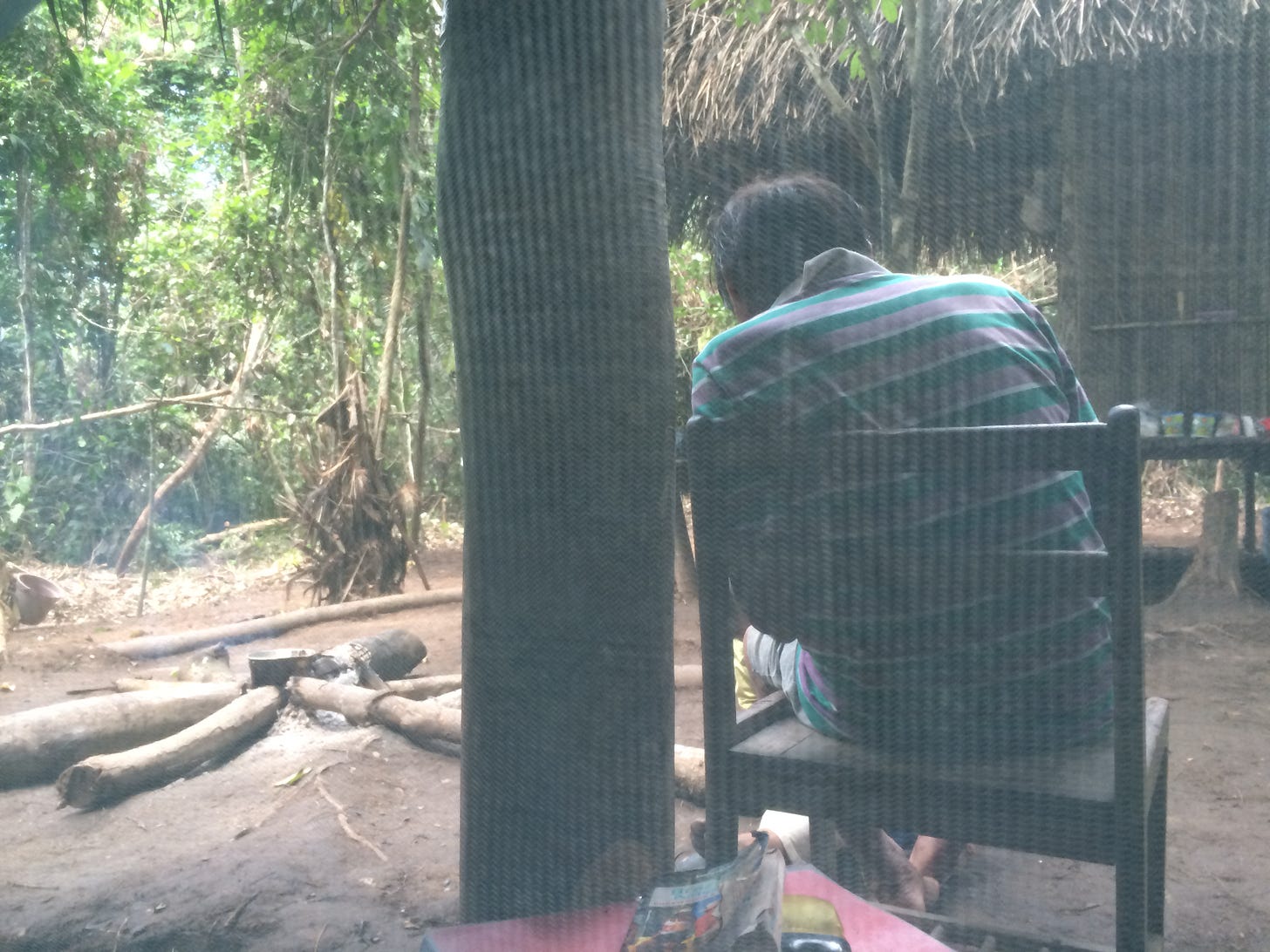
But what about “success”? Returning to that question, I could see how superficial the Western perspective on success can be. Why put a label on healing? Healing in the West typically refers to the healing of the body. But what about inner health and peace? To me, both of those women’s experiences felt like deep healing, and no further labelling was necessary. Knowing that Bonnie had healed her body and left our centre without cancer was a moment that I will cherish until the end of my life. And knowing that Mary Lou died in complete peace, without fear, surrounded by those who loved her, that was an incredible journey to be part of.
What I saw in those moments in the jungle is that healing can take many shapes and forms. Having that perspective gave me a great deal of clarity on what had happened. I felt so grateful for the wider perspective that the dieta was showing me.
When I came out of that vision, I got up out of my hammock and suddenly got so dizzy that I had to hold myself to a tree so I would not faint. It took me a while to regain my consciousness. I slowly lowered myself to the ground and sat there for a while. I had already noticed my body getting weaker since the start of the dieta, but at that moment, it really sank in. My stomach rumbled, and I felt hungry. I got up and walked back to the temple, hoping Louisa might have some food ready. Edi, Muka and Qwatsi stayed in the jungle.
Arriving there, I found her rumbling around, cleaning the earth with her broom. The fire was going, and some pots were cooking the ever-present rice, pasta, and beans. It felt so comforting to see Louisa there. We sat down and talked a bit. She had so many things to share, so much love to give. She took care of us so well during our dieta.
While I was eating a plate of food just outside the temple, rain began pouring down from the heavens. Rains in the Amazon can be wild and fierce. Quickly, we ran into the temple to stay dry. A few minutes later, Edi, Muca, and Qwatsi came running down and dove inside as well. They were completely soaked, their hammocks tucked under their arms. Looking at them, I noticed they hadn’t taken my things with them. It took me by surprise. All of my belongings were still out there in the jungle, getting drenched in the heavy rain—my hammock, the mosquito net, my backpack with its contents, and the Daime. Why hadn’t they taken my things along with their own?
Qwatsi looked at me, and it was as if he could read my thoughts. Without hesitation, he dropped his things in the temple and ran back into the jungle. Seeing him sprinting through the rain, something stirred inside of me, and I ran after him.
He was running so fast that I struggled to catch up. By the time I reached the place where my hammock hung between two trees, he had already climbed one tree, undoing the knot and holding the hammock in one hand. Seeing him there, high in the tree, made me stop in my tracks. I watched Qwatsi working with such love and devotion that tears began to roll down my cheeks. For the first time in my life, I felt what it might be like to be a father, to feel that kind of love for a child.
Standing there in that eternal moment, I felt overwhelming gratitude for that boy in my life. After a moment, I caught myself and snapped out of it. I ran up to the tree and untied the other knot. We packed the rest of my things into the backpack and ran back to the temple. When we arrived, we looked at each other, and I felt so many things all at once. I was so proud of him. What a beautiful boy he was. I could see that he would grow into a strong man, someone with a lot to give to the people around him. We gave each other a long hug, holding that embrace for what felt like a lifetime.
We moved the fire into the temple and sat around it for a while, warming ourselves and drying off. The next days unfolded beautifully. I kept my intention of drinking a cup of medicine every four hours. Although the timing sometimes stretched a bit longer, I continued going deeper into the force of Her than I ever had before.
Several times I took my hammock and returned to that clearing in the jungle. The place had become sacred to me, and many times I would lie out there in my hammock, with Qwatsi by my side. It became harder and harder to stay in the house or the temple, as more people from the village began to show up and linger around. I was surprised to see this happening, as it had been very clear that no one should enter our dieta space. I just observed it and decided I much preferred the silence of the clearing we had made. It became my favourite place, and I spent much of my time there, deep on the force of the medicine, either alone or with Qwatsi.
There in my hammock, I let myself be engulfed by the sounds of the jungle. Sometimes I would practice a new song on the guitar or read a book. Mostly, I would just lie there and absorb everything, listening to the ever-present sounds of the forest.
On one of those days, Qwatsi and I drank some Ayahuasca together in that special place. For a long time after our journey, we sat at the base of a large tree, our legs dangling over the earth, speaking softly in the quiet of the jungle. I shared the love I felt for him and told him how much I would miss him when I left. He looked at me with those sharp, bright eyes of his and asked if he could come live with me in Peru. It was such an innocent, heartfelt question that for a moment it stopped me in my tracks. I felt a surge of warmth, almost like what I imagine a father feels when a child asks to stay by his side.
We talked about it for a while. I was not sure how to respond, so I told him that I didn’t know if it was possible. I explained gently that I didn’t have a wife, and that I thought it would be good for him to have a woman to take care of him. Deep down, I wished I could simply say yes. Later I would find out that it would have been nearly impossible for him to join me in Peru anyway, as he had no documents or passport.
Qwatsi was a bit disappointed upon hearing that, but his spirit was strong, and it didn’t stop us from daydreaming about the future. Sitting there on that big tree root, we imagined that one day I would have a house in that very spot, a house with a wide porch where hammocks would sway in the breeze. We pictured ourselves living there together, taking rapé under the same tree, bathing in the small creek nearby, tending to the fire, and sharing the silence of the jungle. It was such a pure dream, so real in that moment that it felt like we were already living it. I still hold that memory close to my heart. From that day forward, we would often speak about “our house in the jungle,” as if it already existed somewhere just beyond the veil of time.
Four or five days into my ten-day commitment, it became increasingly difficult to walk. My body was so weak, and my journeys were very deep. It also became harder and harder to drink the Santo Daime. Without refrigeration in the jungle, the medicine was fermenting slightly, and its mouldy taste grew worse and worse. Sometimes I would sit with the glass in my hand for over half an hour before I could manage to drink it, doing my best to keep it down after I gulped it. Getting out of the hammock had become a challenge. Louisa often helped me eat, get up, and even go to the bathroom. Her care during those ten days made me feel completely safe and protected.
I noticed that Edi and Muca were spending less and less time in the temple and around the house. One day I suggested holding a ceremony, and they both shook their heads and walked to the village in silence. I stood there, perplexed. Had the rules of the dieta not been clear? Were we not supposed to stay at the centre for the first month without leaving? Slowly, the joy and excitement we had all felt so strongly at the start began to fade. A new chapter of the dieta was opening.
Lying there in my hammock, wrapped in the embrace of the jungle and the silence of the dieta, I felt the circle complete itself. The memories of the centre, the faces of the people who had come through its doors, the intensity of those early ceremonies, the beauty and the overwhelm—they all moved through me like a quiet stream. There was so much I had learned, and just as much I had yet to understand.
Looking back now, I see how strong the vision had been in those early years. I had followed a thread of synchronicities and signs that felt undeniable. Doors opened, people arrived, and money had been there; a centre was born almost overnight. There was a kind of magic in that. But visions, I came to understand, are one thing. Living them is another. To truly hold a vision in the world, to carry its weight with integrity, requires more than insight and inspiration. It asks for presence, clarity, skill, and maturity. It asks for years of walking the path.
Back then, I had just a few ceremonies under my belt. A few rounds of sitting with the medicine, and only a handful of times facilitating. And yet, there I was, holding a centre, guiding programs, leading others through some of the most delicate and transformative experiences of their lives. I had said yes to something I could feel in my bones, something that was calling me, but I had not yet become the man who could fully carry it.
The synchronicities had shown me the path, but they had not prepared me for the full scope of what it meant to live that path. The ceremonies were only part of it. There were all the other layers: the relationships, the communication, the team dynamics, the management of space and energy, finances, the constant holding of others while trying to stay grounded in myself. It was a lot to carry. And while I honoured the courage and trust that had brought me there, I could also feel, during this dieta, a humbling realisation settle in me. I needed more time. I needed more training. I needed to deepen my presence before taking on that much again.
That didn’t come with regret. If anything, it came with tenderness. A gentle bow to the younger version of myself who had leapt into something so big with so much heart. I could see him now, not as someone who had done it wrong, but as someone who had been learning in real time. The centre had been my university, my initiation, my teacher. And though I wasn’t sure what would happen with it once the dieta ended, I trusted that whatever was meant to continue would do so in the right way, at the right time.
I lay there, breathing in the scent of the earth, letting the sounds of the forest remind me of the rhythm of things. There was no rush. Life had its own timing. And I was beginning to trust that more and more.
The dieta itself was teaching me this. The silence, the plants, and the force of the medicine were shaping me from the inside out. These memories of Sananda-Wasi were not just stories—they were alive, revealing new layers of meaning as I lay in that hammock. The jungle had become a mirror, and the hammock a cradle of reflection, reminding me that this path is not walked in a single leap but in countless steps of learning, humility, and trust.
And with those realisations, I drank another cup. The ten days weren’t over yet. In a way, it felt like everything was only just beginning.



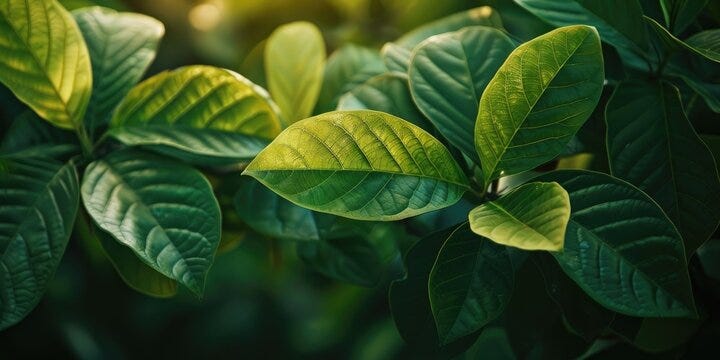
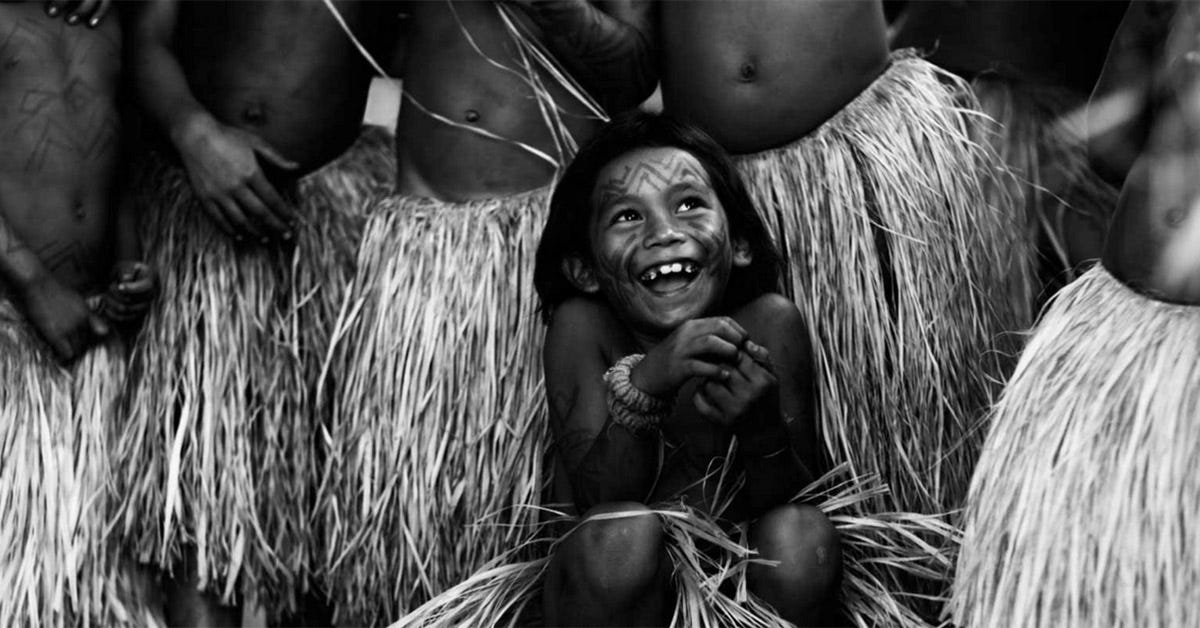
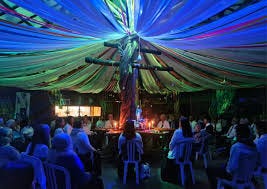
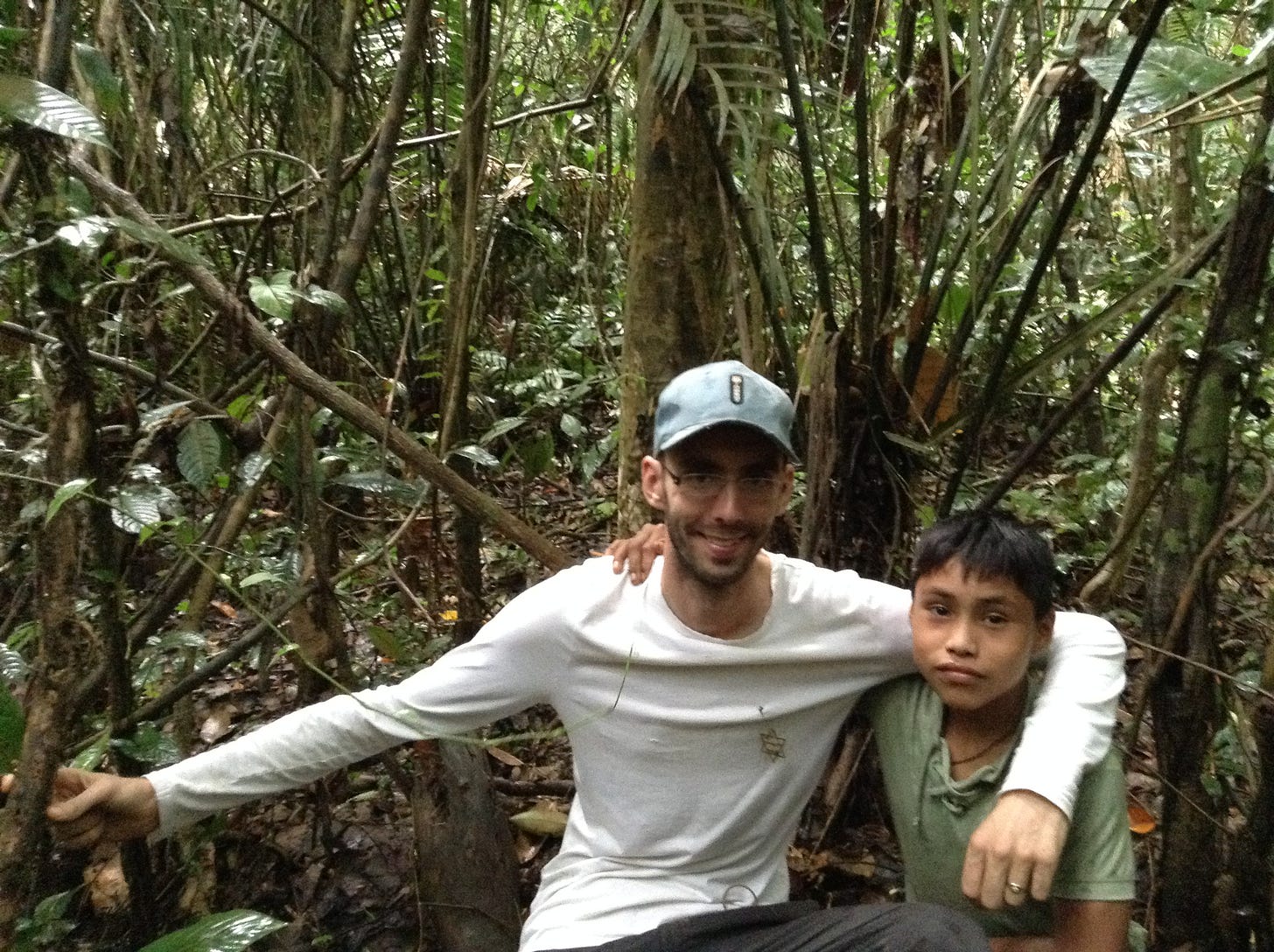
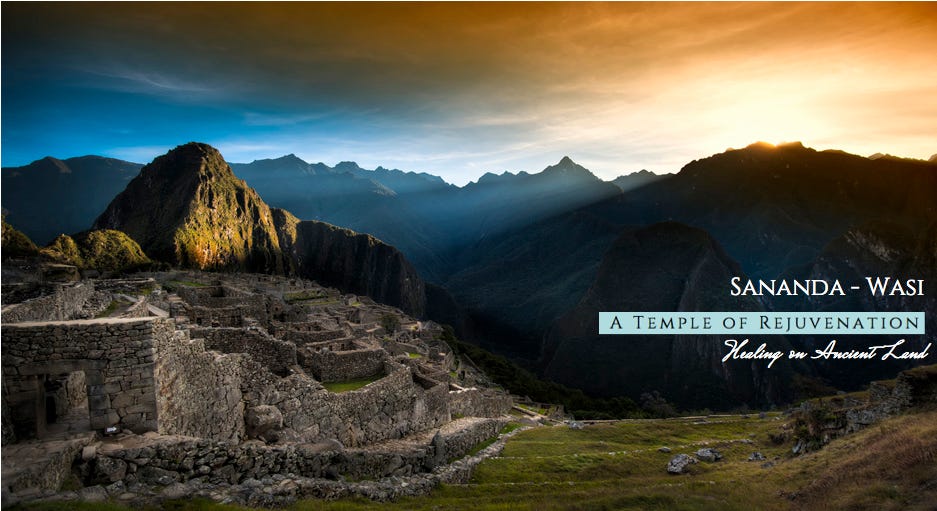
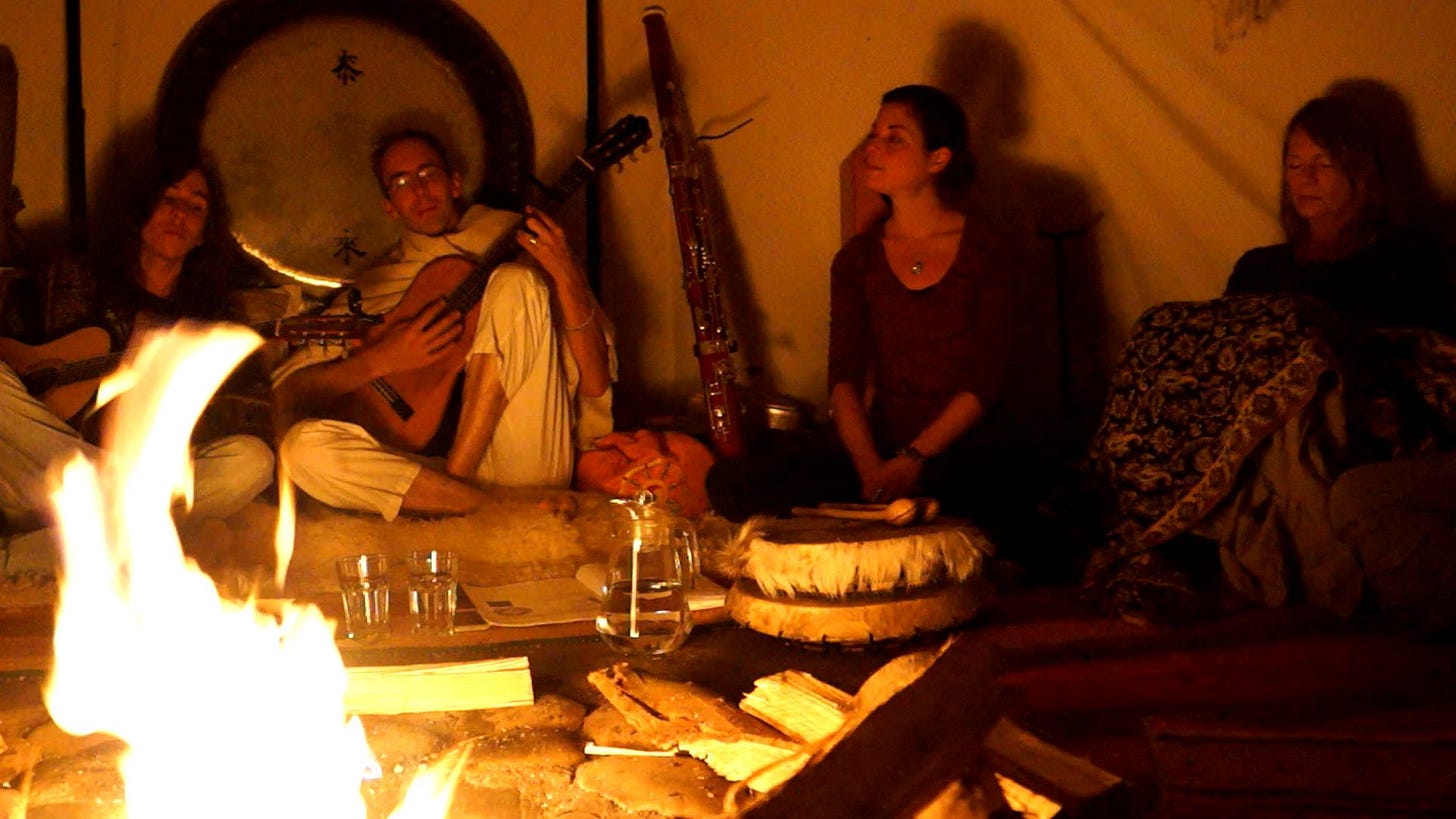
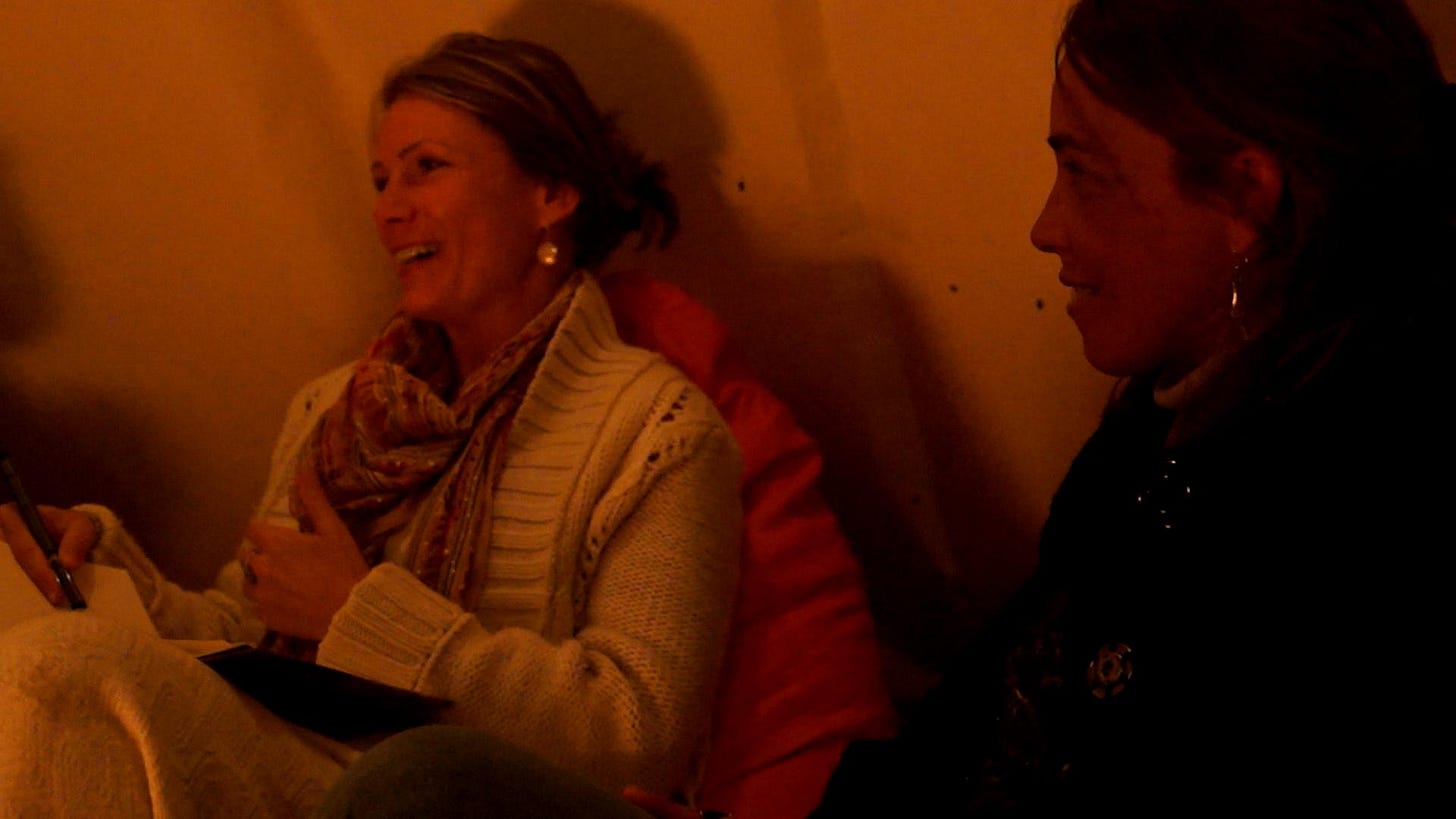
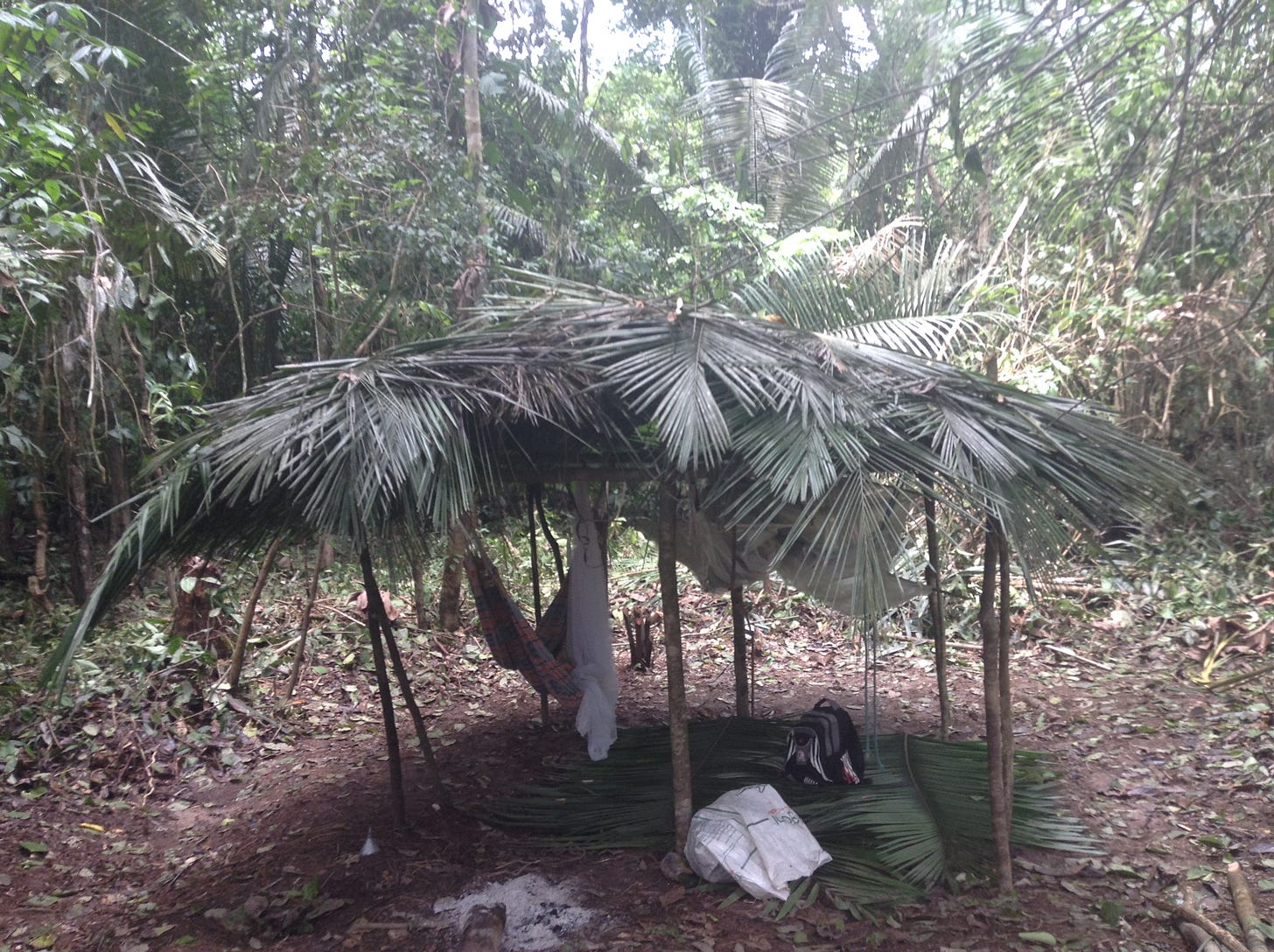
Can hardly wait for the next chapter brother Dennis. 🙏🤍